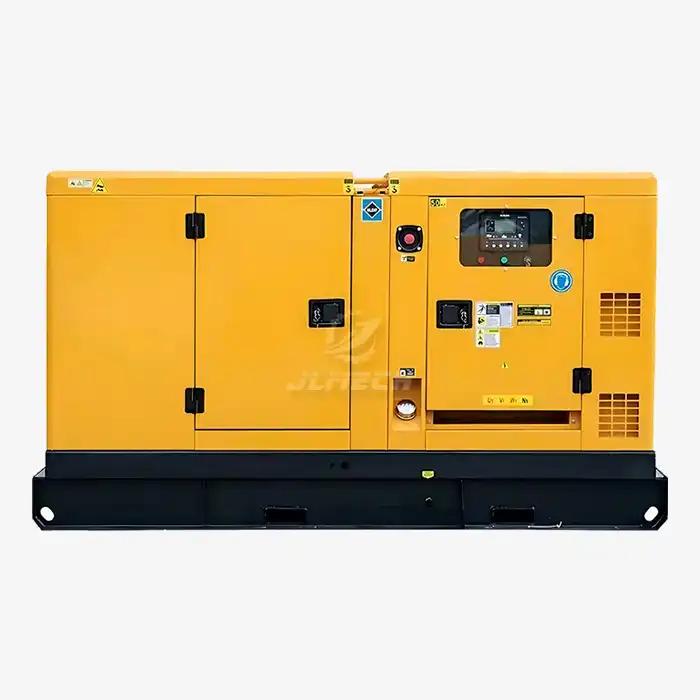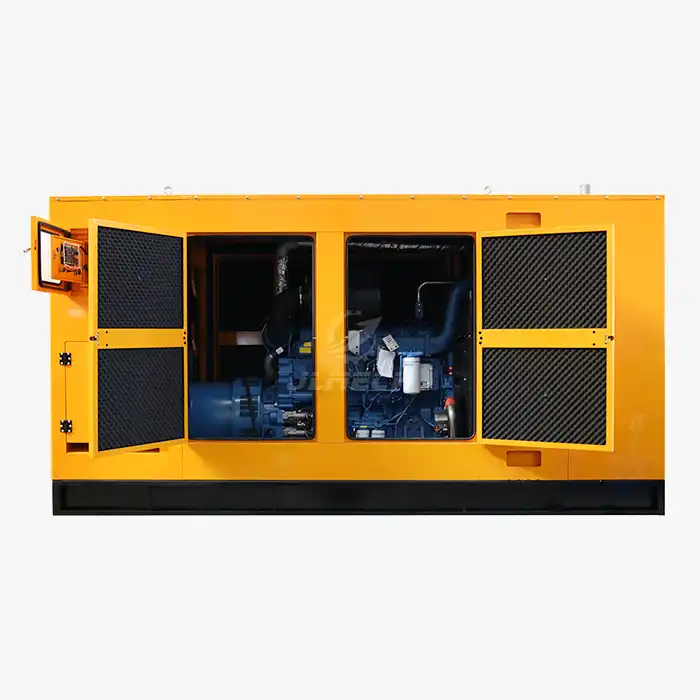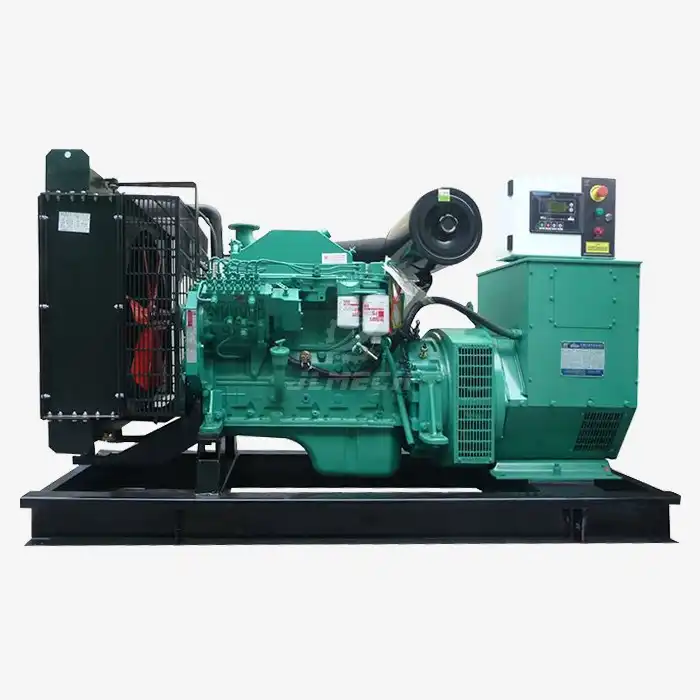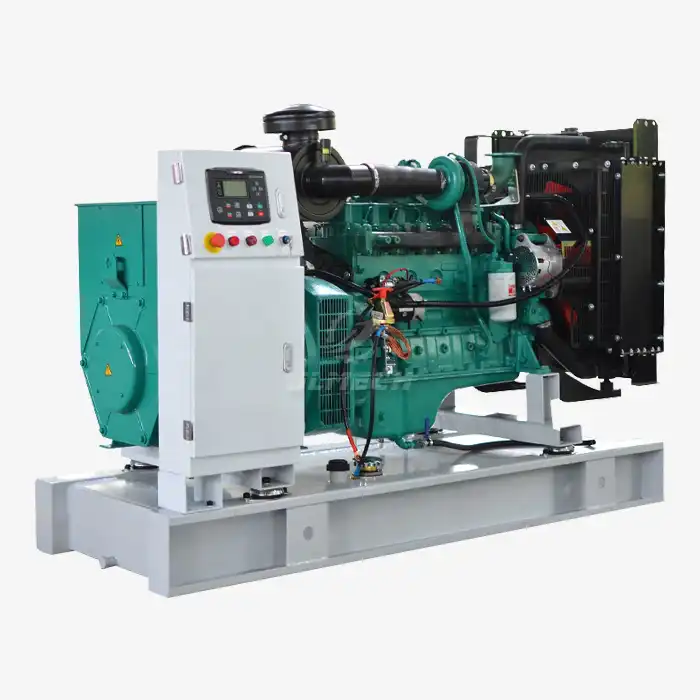What causes frequency fluctuations?
For any facility relying on generator power, consistent electrical frequency is non-negotiable. Frequency fluctuations can disrupt sensitive equipment, reduce system efficiency, and even lead to complete operational failure. Understanding the causes of generator frequency fluctuation is the first step toward preventing these issues and ensuring the reliable performance of your power system. These fluctuations typically stem from imbalances between the generator's power output and the load demand, but various mechanical, electrical, and control system factors can contribute to this fundamental imbalance.

Basic Working Principle
Generator frequency is directly tied to rotational speed. For a 50Hz system, the generator must maintain 1500 RPM (for a 2-pole generator); for 60Hz, it's 1800 RPM. This speed must remain constant despite changing load conditions. The generator's governor system is responsible for maintaining this equilibrium by adjusting fuel supply in response to load changes. When this balance is disrupted – whether by sudden load changes, fuel issues, or mechanical problems – frequency fluctuations occur. Understanding this relationship between speed, load, and control systems is essential for diagnosing the causes of generator frequency fluctuation in any power system.
Load-Related Causes
Sudden or significant changes in electrical load represent the most common source of frequency variations. These disturbances create an immediate imbalance between power supply and demand.
- Sudden Load Changes: When large motors start up or significant loads are abruptly connected/disconnected, the rapid power demand change can temporarily overwhelm the governor's response capability.
- Intermittent Loads: Equipment with cyclical operation patterns (such as compressors, crushers, or elevators) creates regular, predictable fluctuations that challenge the governor system.
- Load Exceeding Capacity: Operating a generator beyond its rated capacity causes the frequency to drop as the engine struggles to maintain speed under excessive demand.
- Non-Linear Loads: Modern electronic equipment (including variable speed drives and computer systems) can introduce harmonic distortions that interfere with proper generator operation and frequency stability.
Fuel System Issues
The fuel delivery system plays a critical role in maintaining consistent engine speed, making it a frequent contributor to frequency instability.
- Fuel Quality Problems: Contaminated fuel, water in the fuel system, or poor fuel grade can cause irregular combustion, leading to uneven power output and frequency variations.
- Fuel Supply Restrictions: Clogged filters, pinched fuel lines, or malfunctioning transfer pumps restrict fuel flow to the engine, preventing it from responding properly to load increases.
- Air in Fuel System: Air bubbles in the fuel lines compress under pressure, creating a spongy response that delays precise fuel delivery when needed.
- Injection System Problems: Worn injectors or faulty injection pumps deliver fuel unevenly, creating power pulses that translate directly into frequency fluctuations.
These fuel-related issues represent some of the most common causes of generator frequency fluctuation in diesel generator sets.
Governor and Control System Problems
The governor serves as the generator's brain for speed control, making its proper function essential for frequency stability.
- Governor Calibration Issues: Improperly calibrated governors cannot accurately measure speed or appropriately adjust fuel delivery, leading to constant "hunting" for the correct speed.
- Mechanical Governor Wear: Traditional mechanical governors use flyweights and springs that wear over time, reducing their sensitivity and response accuracy.
- Electronic Control Failures: Sensors, actuators, or control modules in electronic governing systems can develop faults that compromise the entire control loop.
- Response Time Settings: Overly aggressive or excessively damped governor response parameters can create oscillations rather than stable operation.
Modern electronic governors generally provide superior frequency control compared to mechanical systems, but both require proper maintenance and calibration to prevent them from becoming causes of generator frequency fluctuation.
Engine Performance Factors
The mechanical condition of the engine itself directly impacts its ability to maintain constant speed under varying loads.
- Compression Issues: Worn piston rings, leaking valves, or damaged cylinder liners reduce compression, diminishing power output and response capability.
- Air Intake Restrictions: Clogged air filters or intake obstructions limit combustion air supply, preventing the engine from producing full power when needed.
- Turbocharger Lag: In turbocharged engines, delayed spool-up response during sudden load increases can create temporary frequency dips until boost pressure builds.
- General Engine Wear: As engines accumulate operating hours, general wear reduces overall efficiency and responsiveness, making it increasingly difficult to maintain precise frequency control.
Consequences of Frequency Fluctuations
Understanding the impacts of frequency instability highlights why addressing the root causes is so critical to operations.
- Equipment Damage: Sensitive electronic equipment, particularly medical devices, laboratory instruments, and communication systems, can malfunction or sustain damage under frequency variations.
- Motor Speed Variations: Since AC motor speed is directly tied to frequency, fluctuations cause process variations in manufacturing, HVAC systems, and pumping applications.
- System Instability: Persistent frequency fluctuations can trigger protective shutdowns or lead to more severe system-wide instability, including potential complete system collapse .
- Increased Maintenance Costs: Operating with frequency variations places additional stress on both the generator and connected equipment, accelerating wear and increasing maintenance requirements.
Troubleshooting Approaches
A systematic approach to diagnosing frequency issues can quickly identify the root cause and appropriate solution.
- Monitor Patterns: Use frequency logging equipment to identify whether fluctuations correspond to specific load events, random occurrences, or follow a consistent pattern.
- Load Testing: Conduct step-load tests to observe governor response and identify whether issues occur during specific load transition scenarios.
- Fuel System Inspection: Check fuel quality, filter condition, and inspect for air ingress through visual inspection and pressure testing.
- Governor Calibration Check: Verify governor settings and calibration using manufacturer-specified procedures and equipment.
- Mechanical Inspection: Assess engine compression, air intake system, and general mechanical condition to identify performance-limiting factors.
Prevention and Solutions
Proactive maintenance and appropriate system design can prevent most frequency stability issues before they impact operations.
- Regular Maintenance: Implement comprehensive maintenance schedules including fuel system servicing, governor calibration checks, and engine performance verification.
- Proper Sizing: Ensure generators are appropriately sized for both steady-state and peak loads, considering both magnitude and rate of load changes.
- Governor Upgrades: Consider upgrading from mechanical to electronic governing systems for improved response accuracy and stability.
- Load Management: Implement sequenced starting for large motors and distribute operations to minimize sudden load changes.
- Power Quality Analysis: Conduct periodic power quality audits to identify developing issues before they cause operational problems.
Addressing the causes of generator frequency fluctuation through these preventive measures ensures reliable power quality and protects your operations from disruptive power issues.
Conclusion
Generator frequency fluctuations stem from various sources, including load changes, fuel system problems, governor issues, and engine mechanical condition. Understanding these causes of generator frequency fluctuation enables targeted troubleshooting and effective prevention strategies. By implementing proper maintenance practices, ensuring correct generator sizing, and utilizing appropriate control technologies, you can maintain stable frequency output and protect your operations from the disruptions and damages associated with power quality issues.
Our technical team specializes in diagnosing and resolving generator frequency stability issues. For professional assistance with your power system needs, contact our experts at skala@whjlmech.com.
References
Johnson, M. (2022). Emergency Power Systems: A Comprehensive Guide to High-Speed Diesel Generators. Power Engineering Quarterly, 45(3), 78-92.
National Fire Protection Association. (2020). Standard for Emergency and Standby Power Systems (NFPA 110).
Generator Manufacturers Association. (2021). Guidelines for Rating and Application of Generator Sets. GMA Technical Publication TP-101.
International Organization for Standardization. (2018). Reciprocating internal combustion engine driven generating sets — Part 1: Application, ratings and performance (ISO 8528-1:2018).











